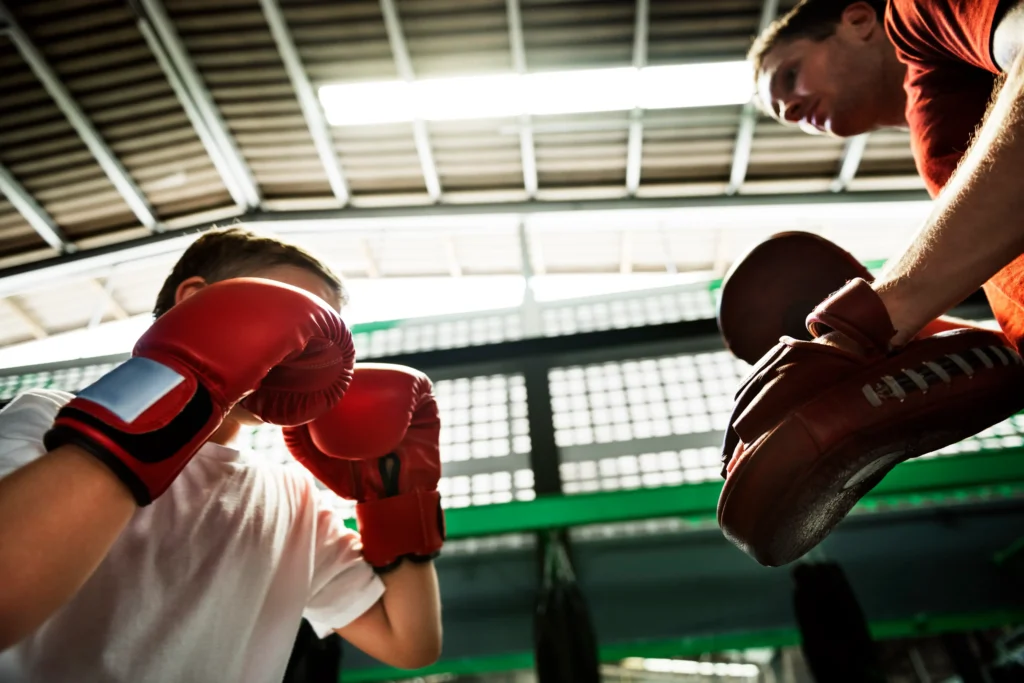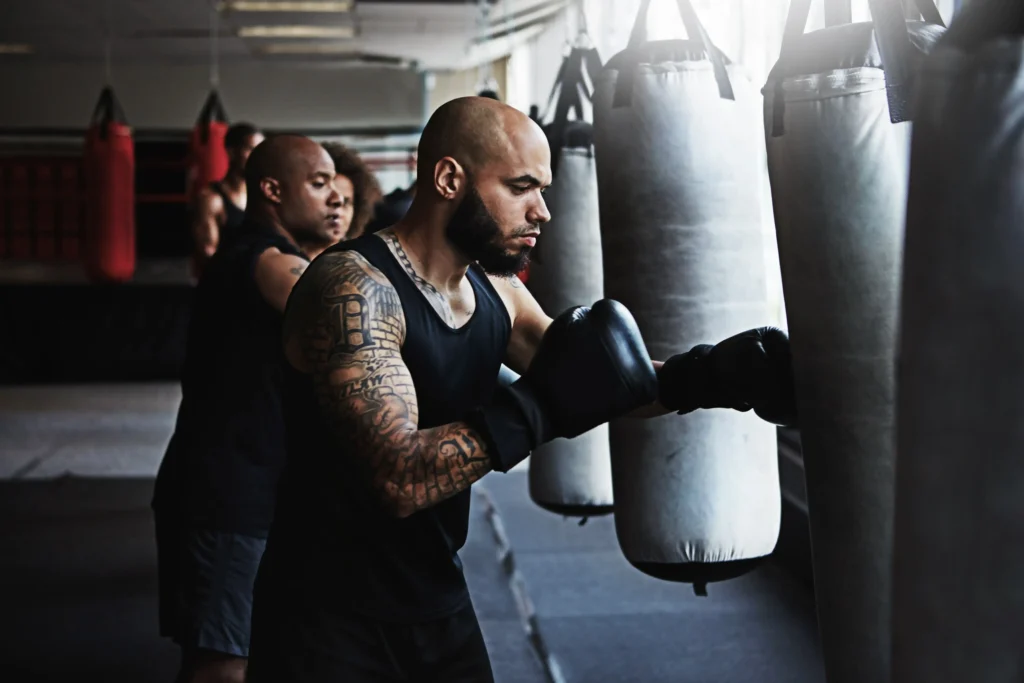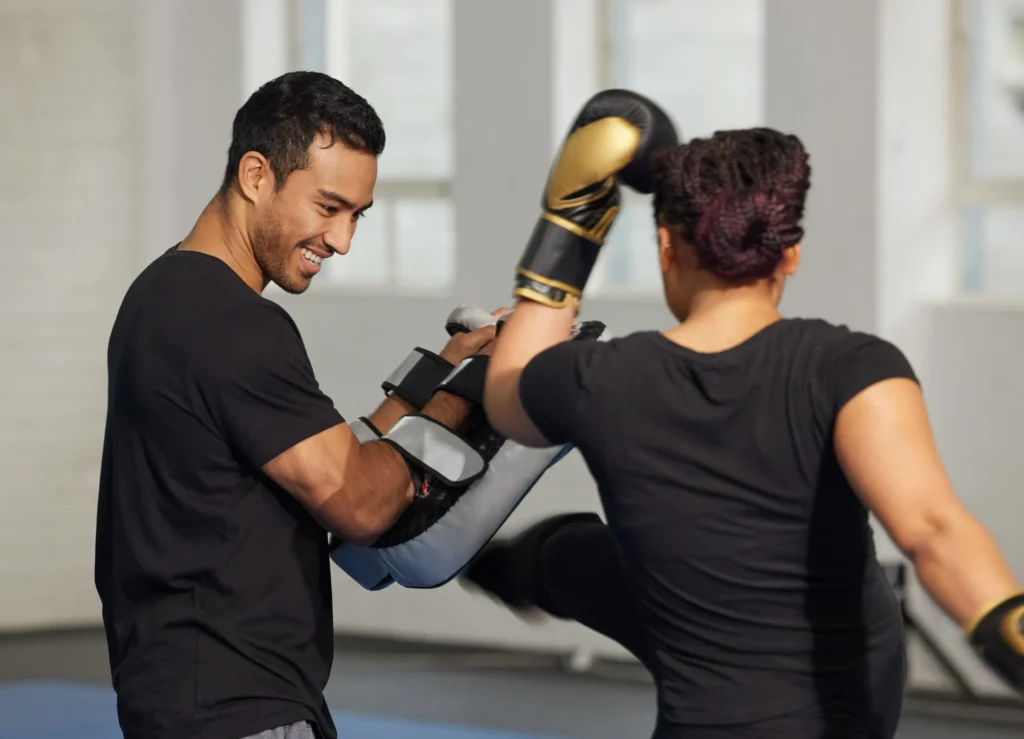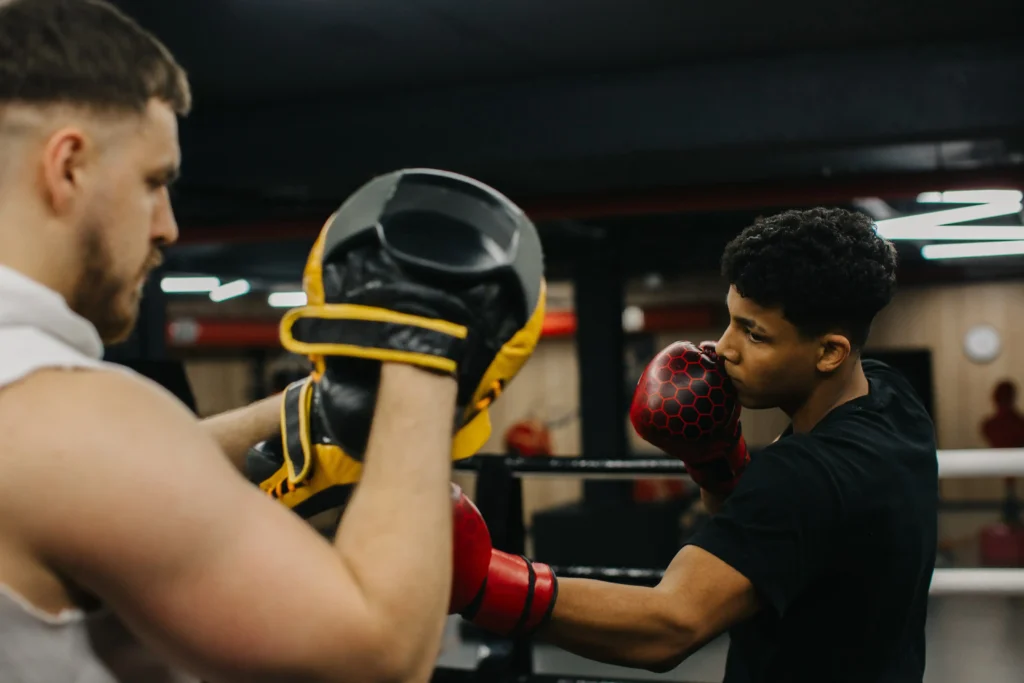Wanna step into a boxing gym and finally throw a jab? It’s an exciting sport that builds strength and confidence, but the big question is, how much does it actually cost?
The pricing can depend on the gym, location, and membership deals. Plus, there are hidden costs, like equipment or registration fees that might surprise you.
Don’t panic! I’ll clear things up for you. Read on and explore the break down of costs, the essential gear you’ll need, and how to avoid extra fees. Know exactly what to expect and how to get the most value for your money as you start your boxing journey.
Table of Contents
Cost Breakdown for Boxing Lessons
Here are some factors that influence the pricing of classes. To find the best value, take advantage of trial classes and introductory offers before committing financially.
1. Geographic Location and Cost of Living
The cost of boxing classes is highly shaped by the local economy and cost of living. In major metropolitan areas or affluent neighborhoods, prices tend to be higher due to increased overhead costs.
For example, in cities like New York or San Francisco, monthly memberships can range from $100 to $300, depending on the gym’s facilities and location.
Conversely, in suburban or rural areas, boxing classes are often more affordable. In Panama, my friend paid $325 for the first month, which included registration and equipment. Then $100 for each subsequent month.
2. Facility Type: Dedicated Gym vs. Multi-Sport Center
- Dedicated Boxing Gyms: These gyms focus solely on boxing and offer specialized training. There are experienced coaches and a strong boxing community. The monthly memberships in such gyms can range from $100 to $150. Some premium gyms may charge up to $300.
- Multi-Sport Centers: These facilities offer boxing as one of many disciplines, such as Muay Thai or Jiu-Jitsu. The cost may be comparable or slightly higher than dedicated boxing gyms. But they provide access to a broader range of classes and equipment.
- General Fitness Chains/Community Centers: Boxing classes in these settings are often part of a broader membership with other fitness classes. The cost is typically lower. It may range from $70 to $150 per month, but the quality of boxing instruction can vary.
3. Class Structure: Group vs. Private Lessons
- Group Classes: These are the most common and cost-effective option. Group classes typically cost between $25 and $35 per session. The monthly memberships cost around $75 to $200. There is a high-energy environment and motivation for newbies.
- Private Coaching: One-on-one instruction for specific goals and skill level. Private sessions are more expensive. They cost between $40 and $80 per hour. Some trainers even charge up to $100 per session. Private coaching is good if you want to accelerate progress or prepare for competition.
Membership Duration and Payment Structure
- Month-to-Month: There is flexibility but is often the most expensive per month.
- Multi-Month Packages (3, 6, 12 months): Discounts for longer commitments.
- Annual Upfront Payments: They offer the best per-month value but require a larger initial outlay.
- Drop-in Rates: Good for trying out a class or occasional attendance but are the most expensive per session.

Introductory Offers and Trial Classes
Many gyms offer free trial classes or discounted introductory packages. For example, 3 classes for $60 or 1 week unlimited for $50. The offers are good for experiencing the gym and coaching before committing financially. You can use this time to observe the coaching style, class energy, and cleanliness of the facility.
Hidden Costs to Consider
- Registration Fees: Many gyms charge a one-time registration or initiation fee. It can be about $50 to $100.
- Equipment Costs: Some gyms provide equipment, but you need to purchase your own. Basic gear like gloves, wraps, and mouthguards can cost between $50 and $200.
- Specialty Classes: Workshops or specialty classes with guest trainers can add to the cost. They can be around $20 to $100 per session.
Essential and Optional Boxing Equipment Cost
If you’re starting out in boxing, you need some gear for safety and performance. Here’s what you need to budget for:
Essentials:
- Hand Wraps ($10 – $25): You must protect your hands and wrists inside the gloves. Get two pairs so you can wash one while using the other.
- Boxing Gloves ($20 – $100): Gloves are must to protect your hands and knuckles. You should go for all-around training gloves (12-16 oz). Try to buy used or entry-level gloves to save on costs at first.
- Mouthguard ($10 – $30): It protects your teeth, lips, and jaw, if you plan to spar. It’s a must-have.
Optional but Recommended:
- Jump Rope ($10 – $30): It is great to warm up and improve footwork.
- Workout Attire: Comfortable, breathable gear for your training sessions.
- Water Bottle ($5 – $20): Hydration is key!
As you advance, you might consider headgear, boxing shoes, and groin protectors for sparring. But for beginners, the essentials will get you going.

Some Strategies to Save Money on Boxing Classes
1. Maximize Free Trials
Many gyms offer a free first class to let you experience their environment and coaching style. So, utilize them properly. Also, look for deals like 3 classes for $50 or a week of unlimited classes for $90.
2. Discounts and Package Deals
Some facilities offer discounts for students, military personnel, and first responders. If multiple family members are interested, ask about family membership discounts.
Referral Bonuses: You may get discounts if you refer a new member.
Opt for multi-month memberships or annual plans. It often reduces the per-month cost compared to month-to-month options.
3. Be Smart About Equipment Purchases
Begin with entry-level gear. Hand wraps ($10–$25) and gloves ($20–$100) are must. Your gym may provide gloves for trial classes.
4. Negotiate When Possible
Some smaller, independent gyms might be open to slight negotiation. For example, if you offer long-term commitments or if you’re paying upfront.
Frame your negotiation around committing for a longer period. It can be beneficial for both you and the gym.
5. Online Resources for Supplemental Learning
They are not a substitute for in-person coaching. But free online tutorials can help you practice basic footwork or shadowboxing at home, like your gym classes.

How to Select Your Boxing Facility?
To make an informed decision, you must check these factors:
1. Coaching Quality
Find gyms with experienced coaches who are certified by reputable organizations. Experienced trainers can provide personalized feedback so that you’re learning proper techniques.
During trial sessions, pay attention to how coaches interact with students. Do they provide individual feedback? Is the focus on fundamentals and safety? It can give you insight into the quality of instruction.
2. Gym Environment and Community
Positive Atmosphere: A welcoming and motivating environment can impact your consistency. You should look for gyms where members seem friendly and supportive.
Also, cleanliness matters. A well-maintained gym speaks to professionalism and hygiene. Check that the facilities are clean and the equipment is in good condition.
3. Class Variety and Schedule Flexibility
You should select a gym that offers classes suitable for your level. The variety in class types can keep you engaged and help you progress.
Also, the gym’s class times fit your routine. The flexibility in scheduling can help you maintain consistency in your training.
4. What’s Included in the Membership?
Verify what’s included in the membership fee. Does it cover all classes, open gym access, or specific equipment usage? Some gyms might include gloves or wraps for use. Others require you to purchase your own.

Red Flags to Watch Out For
High-Pressure Sales Tactics: Be wary of gyms that pressure you into signing long-term contracts on the first visit or offer “today only” deals. A reputable gym will give you time to make an informed decision.
Lack of Transparency: Avoid gyms unwilling to provide a clear breakdown of all fees (monthly, registration, annual, cancellation) in writing. Transparency is key to avoid unexpected costs.
Poorly Maintained Facility: Broken equipment, dirty facilities, or unhygienic conditions show a lack of care and potential safety issues. You should select a gym that prioritizes maintenance and cleanliness.
Vague Contract Terms: Contracts with unclear cancellation policies, automatic renewals without clear notification, or hidden clauses should raise concerns. Always read the fine print before committing.
Negative Online Reviews: Consistent complaints about billing issues, poor coaching, or management can be a red flag. Research online reviews and forum discussions and check other members’ experiences.
The right gym for you aligns with your personal goals, offers quality instruction, and provides a supportive community. Take your time to research and visit potential gyms to find the best fit for your boxing journey.
Boxing Class and Gym Cost Comparison
| Gym Class Model | Typical Monthly Cost (USD) | Pros | Cons | What’s Usually Included |
| Dedicated Boxing Gym | $100 – $150+ | Specialized coaching, strong community, often competitive focus | Higher cost, less variety if not solely interested in boxing | Unlimited group boxing classes, access to boxing equipment, sometimes open gym |
| MMA/Martial Arts Gym | $120 – $280+ | Multiple martial arts, cross-training opportunities, strong discipline focus | Can be more expensive, boxing might not be the primary focus | Access to boxing, MMA, BJJ, Muay Thai classes. General gym access |
| General Fitness Chain (with boxing classes) | $30 – $100 (membership) | Most affordable, range of fitness amenities (pool, weights) | Boxing classes often more fitness-oriented than technical, coaching quality varies | Access to all gym facilities, various group fitness classes (including boxing) |
| Private Boxing Coach (Per Hour) | $40 – $100+ | Personalized instruction, accelerated learning, flexible scheduling | Very high per-session cost | One-on-one coaching, custom workouts, specific skill development |
| Drop-in Class | $20 – $40 (per class) | Flexibility, no commitment, ideal for trying out a gym | Most expensive per session, not cost-effective for regular training | Single access to a specific group class |

Some Boxer Budget Scenarios to Plan Your Investment
1. If Your Goal Is Casual Fitness
Training Frequency: 1–2 group classes per week
Approach: Get a month-to-month membership at a general fitness chain or a dedicated gym with a basic package.
Estimated 3-Month Cost:
- Membership: $60/month × 3 months = $180
- Initial Equipment: $70 (hand wraps, basic gloves, mouthguard)
- Total: $250
This scenario is ideal if you’re looking to stay active, relieve stress, and improve general fitness without high financial commitment.
2. If You’re a Serious Beginner
Training Frequency: 3–4 group classes per week, with potential open gym access.
Approach: Commit to a 3-month or 6-month package at a dedicated boxing gym.
Estimated 6-Month Cost:
- Membership: $100/month × 6 months = $600
- Registration Fee: $50
- Initial Equipment: $100 (quality wraps, training gloves, mouthguard)
- Total: $750
The investment is suitable if you’re want to learn the fundamentals, improve your skills, and possibly prepare for sparring or competitions.
3. If You’re an Aspiring Competitor
Training Frequency: 5+ classes per week (private lessons and sparring).
Approach: Enroll in an annual membership at a high-level boxing gym, and supplement with private coaching.
Estimated 1-Year Cost:
- Annual Membership: $150/month × 12 months = $1,800
- Registration Fee: $100
- Advanced Equipment: $300 (sparring gloves, headgear, shoes, groin protector)
- Private Lessons: $800 (10-session package)
- Annual Facility Fee: $50
- Total: $3,050
It’s good for those serious about competing, get intensive training, personalized coaching, and all necessary equipment.

Final Thoughts
While selecting boxing classes, look beyond the price tag. The costs will vary based on location, gym type, class structure, and coaching quality. Don’t forget to factor in equipment expenses and potential hidden fees like registration charges.
Remember, the true value lies in quality coaching, a supportive environment, and suitable facilities: not just the lowest price. Invest in a gym that aligns with your goals for better progress and enjoyable experience.
Use this guide as a roadmap: visit local gyms, take advantage of trial classes, ask detailed questions about all fees, and prioritize safety and quality. The approach will help you find the best fit for your boxing journey.
The information provided is based on typical market rates and I will be review it regularly and update to reflect current trends for relevance.
I hope you’re now equipped to make a confident, financially sound decision and step into the ring ready to achieve your boxing goals.
Have any questions? Let me know in the comments below!


